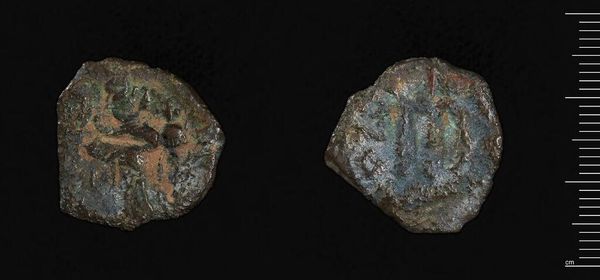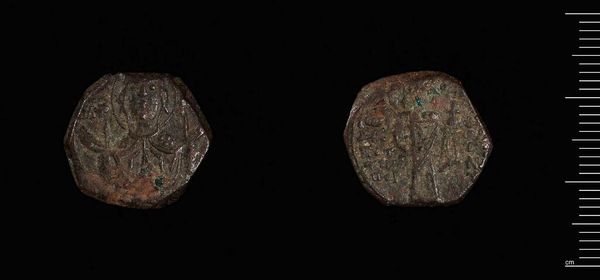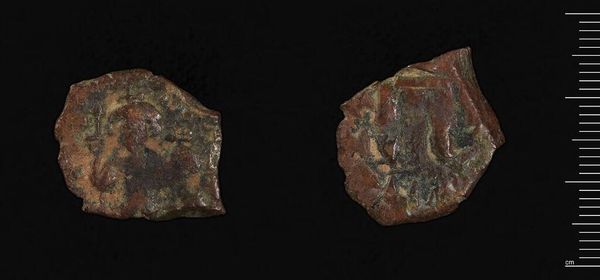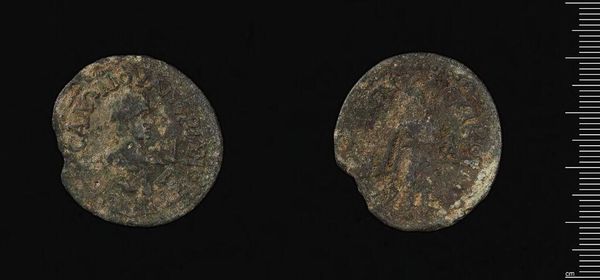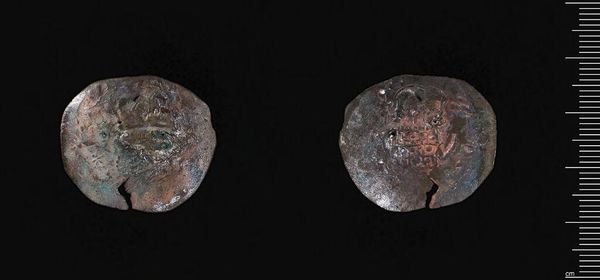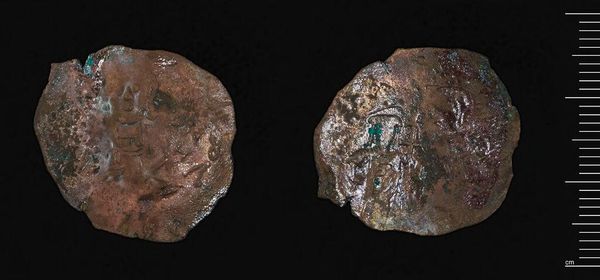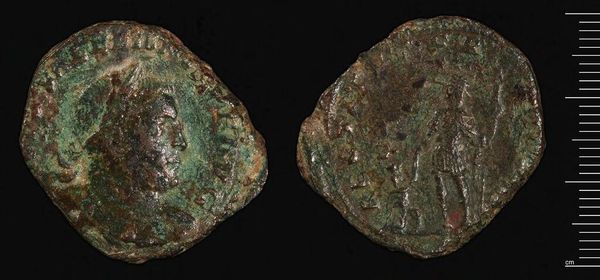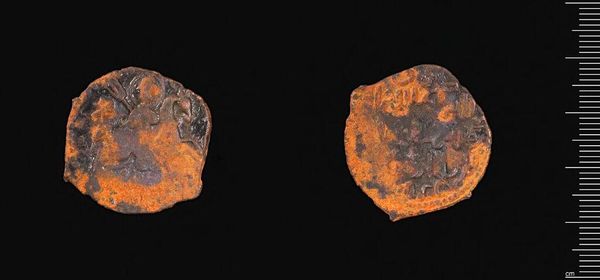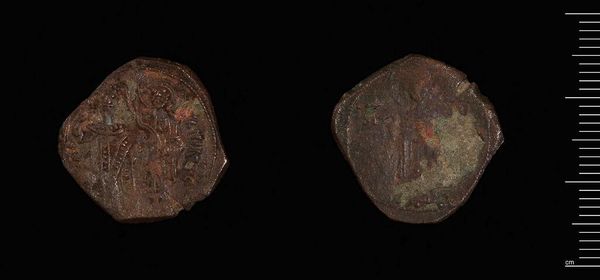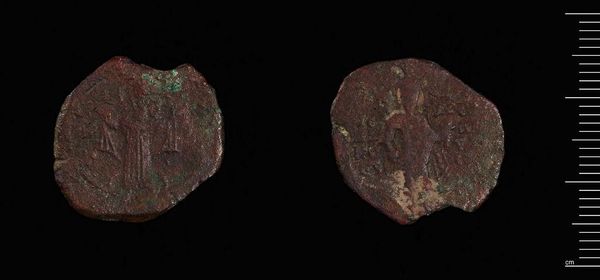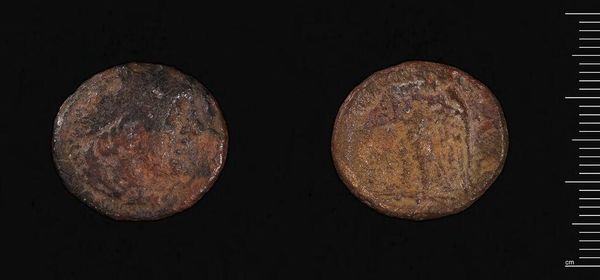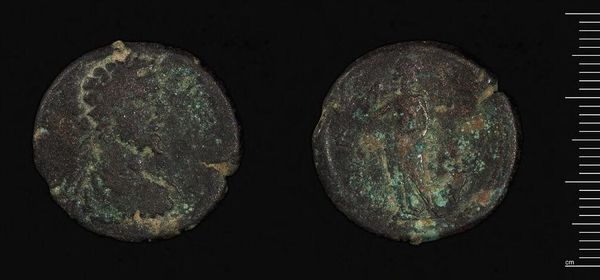
Dimensions: 2.55 g
Copyright: CC0 1.0
Curator: The Harvard Art Museums hold this artifact: a bronze coin minted during the reign of Phokas, a Byzantine Emperor. It's quite small, weighing just 2.55 grams. Editor: It has such a worn texture, almost a greenish, rusty patina. You can still make out the Emperor's profile, though. It feels incredibly tactile, like holding a piece of history. Curator: Its materiality tells a story of empire and trade. Think about the labor involved in extracting the ore, smelting the bronze, and striking the coin itself. Each coin served as a form of imperial propaganda and enabled economic exchange, impacting social structures. Editor: And consider its function within the broader Byzantine political landscape. It served as a tangible expression of imperial power, circulating within a society shaped by complex religious and political conflicts. It's also interesting how images of the Emperor were disseminated. Curator: Absolutely, and these coins likely had considerable value, affecting the daily lives of average citizens. Editor: Seeing it here reminds me of the power of museums to preserve and present these objects for us to study. It is humbling.
Comments
No comments
Be the first to comment and join the conversation on the ultimate creative platform.
